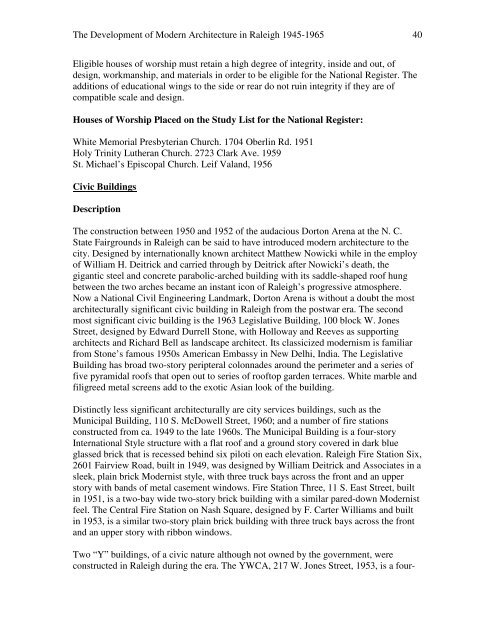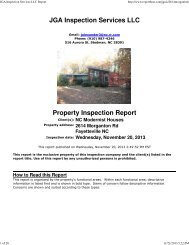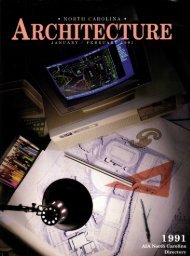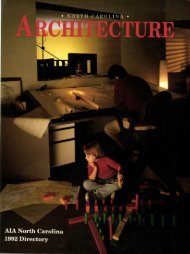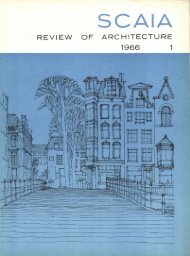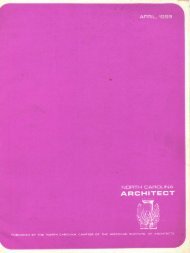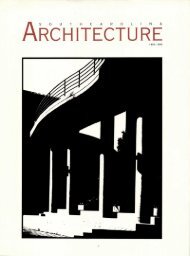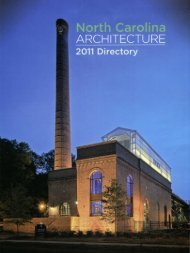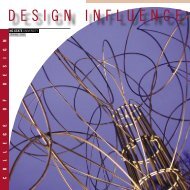The Development of Modernism in Raleigh 1945-1965 - Triangle ...
The Development of Modernism in Raleigh 1945-1965 - Triangle ...
The Development of Modernism in Raleigh 1945-1965 - Triangle ...
Create successful ePaper yourself
Turn your PDF publications into a flip-book with our unique Google optimized e-Paper software.
<strong>The</strong> <strong>Development</strong> <strong>of</strong> Modern Architecture <strong>in</strong> <strong>Raleigh</strong> <strong>1945</strong>-<strong>1965</strong> 40Eligible houses <strong>of</strong> worship must reta<strong>in</strong> a high degree <strong>of</strong> <strong>in</strong>tegrity, <strong>in</strong>side and out, <strong>of</strong>design, workmanship, and materials <strong>in</strong> order to be eligible for the National Register. <strong>The</strong>additions <strong>of</strong> educational w<strong>in</strong>gs to the side or rear do not ru<strong>in</strong> <strong>in</strong>tegrity if they are <strong>of</strong>compatible scale and design.Houses <strong>of</strong> Worship Placed on the Study List for the National Register:White Memorial Presbyterian Church. 1704 Oberl<strong>in</strong> Rd. 1951Holy Tr<strong>in</strong>ity Lutheran Church. 2723 Clark Ave. 1959St. Michael’s Episcopal Church. Leif Valand, 1956Civic Build<strong>in</strong>gsDescription<strong>The</strong> construction between 1950 and 1952 <strong>of</strong> the audacious Dorton Arena at the N. C.State Fairgrounds <strong>in</strong> <strong>Raleigh</strong> can be said to have <strong>in</strong>troduced modern architecture to thecity. Designed by <strong>in</strong>ternationally known architect Matthew Nowicki while <strong>in</strong> the employ<strong>of</strong> William H. Deitrick and carried through by Deitrick after Nowicki’s death, thegigantic steel and concrete parabolic-arched build<strong>in</strong>g with its saddle-shaped ro<strong>of</strong> hungbetween the two arches became an <strong>in</strong>stant icon <strong>of</strong> <strong>Raleigh</strong>’s progressive atmosphere.Now a National Civil Eng<strong>in</strong>eer<strong>in</strong>g Landmark, Dorton Arena is without a doubt the mostarchitecturally significant civic build<strong>in</strong>g <strong>in</strong> <strong>Raleigh</strong> from the postwar era. <strong>The</strong> secondmost significant civic build<strong>in</strong>g is the 1963 Legislative Build<strong>in</strong>g, 100 block W. JonesStreet, designed by Edward Durrell Stone, with Holloway and Reeves as support<strong>in</strong>garchitects and Richard Bell as landscape architect. Its classicized modernism is familiarfrom Stone’s famous 1950s American Embassy <strong>in</strong> New Delhi, India. <strong>The</strong> LegislativeBuild<strong>in</strong>g has broad two-story peripteral colonnades around the perimeter and a series <strong>of</strong>five pyramidal ro<strong>of</strong>s that open out to series <strong>of</strong> ro<strong>of</strong>top garden terraces. White marble andfiligreed metal screens add to the exotic Asian look <strong>of</strong> the build<strong>in</strong>g.Dist<strong>in</strong>ctly less significant architecturally are city services build<strong>in</strong>gs, such as theMunicipal Build<strong>in</strong>g, 110 S. McDowell Street, 1960; and a number <strong>of</strong> fire stationsconstructed from ca. 1949 to the late 1960s. <strong>The</strong> Municipal Build<strong>in</strong>g is a four-storyInternational Style structure with a flat ro<strong>of</strong> and a ground story covered <strong>in</strong> dark blueglassed brick that is recessed beh<strong>in</strong>d six piloti on each elevation. <strong>Raleigh</strong> Fire Station Six,2601 Fairview Road, built <strong>in</strong> 1949, was designed by William Deitrick and Associates <strong>in</strong> asleek, pla<strong>in</strong> brick Modernist style, with three truck bays across the front and an upperstory with bands <strong>of</strong> metal casement w<strong>in</strong>dows. Fire Station Three, 11 S. East Street, built<strong>in</strong> 1951, is a two-bay wide two-story brick build<strong>in</strong>g with a similar pared-down Modernistfeel. <strong>The</strong> Central Fire Station on Nash Square, designed by F. Carter Williams and built<strong>in</strong> 1953, is a similar two-story pla<strong>in</strong> brick build<strong>in</strong>g with three truck bays across the frontand an upper story with ribbon w<strong>in</strong>dows.Two “Y” build<strong>in</strong>gs, <strong>of</strong> a civic nature although not owned by the government, wereconstructed <strong>in</strong> <strong>Raleigh</strong> dur<strong>in</strong>g the era. <strong>The</strong> YWCA, 217 W. Jones Street, 1953, is a four-


